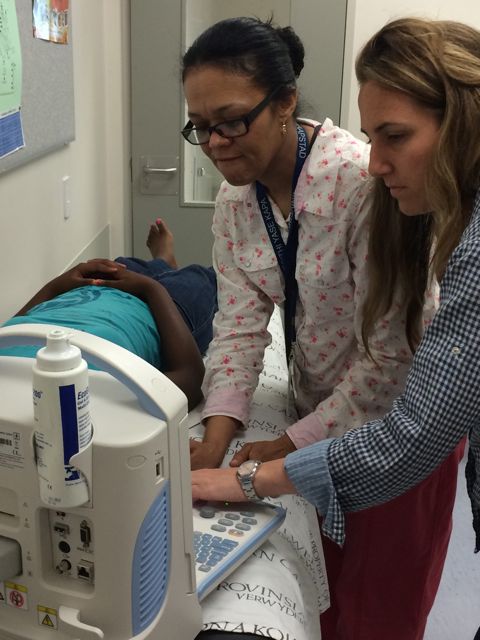Protocols were tested in early December 2013 (Brian Garra, DB and Dr. Kara-Lee Pool, a UCLA resident). Dr. Pool travelled to South Africa in January 2014 to train a non-radiologist in the sweeps.
The gold standard radiologist was identified: Dr. Sabine Bélard, a PhD student in Cape Town with an accepted protocol and ethics approval for pediatric abdominal bedside ultrasound on HIV.
The research protocols and ethics amendments were coauthored by Drs. Kara-Lee Pool, Sabine Belard, Savvas Andronikou and Heather Zar, who represent the authors of the proposed research.
The Red Cross Hospital purchased a high-resolution, small footprint, sector transducer of 7.5 MHz for the project.
 Dr. Kara-Lee Pool (UCLA) offering volume sweep training to Ms. Washiefa Isaacs, a nurse at the Red Cross Memorial Children's Hospital, Cape Town, South Africa, in preparation for the TB research project, January 2014. Dr. Pool is also documenting how this research project is presented to parents/primary carers so as to obtain consent for their children's enrolment.
Dr. Kara-Lee Pool (UCLA) offering volume sweep training to Ms. Washiefa Isaacs, a nurse at the Red Cross Memorial Children's Hospital, Cape Town, South Africa, in preparation for the TB research project, January 2014. Dr. Pool is also documenting how this research project is presented to parents/primary carers so as to obtain consent for their children's enrolment.